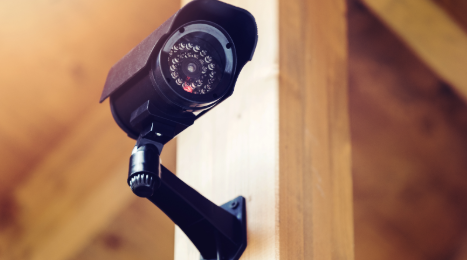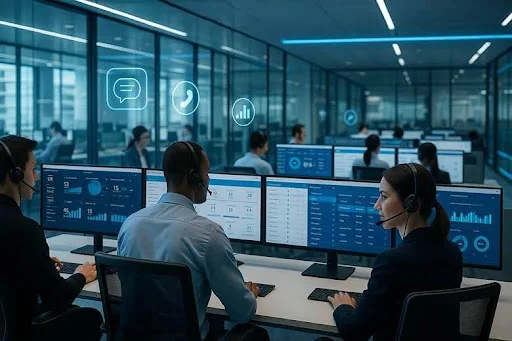
In the quest for better security solutions, technology has transformed how we protect our homes and businesses. The era of grainy footage and unreliable monitoring systems is over. Today’s security landscape has evolved dramatically, offering unprecedented protection through advanced technology.
According to a recent study by Markets and Markets, the global video surveillance market is projected to reach $74.6 billion by 2025, growing at a CAGR of 10.4% from 2020.
This growth reflects the increasing adoption of sophisticated security measures as property owners seek more effective ways to safeguard their assets.
The integration of artificial intelligence, cloud computing, and high-definition imaging has created a new generation of security solutions that are more responsive, intelligent, and accessible than ever before.
The Technology Behind Smart Surveillance Cameras
Modern security systems have evolved far beyond simple recording devices. Today’s smart surveillance cameras incorporate cutting-edge technologies that make them powerful security allies for both residential and commercial properties.
Advanced Hardware Components
The foundation of any effective surveillance system starts with quality hardware. Today’s cameras feature ultra-high-definition sensors that capture crystal-clear images even in challenging conditions. Many models offer 4K resolution, providing incredibly detailed footage that can help identify faces and license plates with remarkable clarity.
Weather-resistant designs ensure these cameras perform reliably year-round, whether facing scorching summer heat or freezing winter conditions. Manufacturers have also prioritized energy efficiency, with many cameras featuring optimized power consumption that reduces electricity costs while maintaining peak performance.
AI and Machine Learning Integration
The real power of modern security camera technology comes from the intelligent software working behind the scenes. AI-powered analytics can distinguish between humans, animals, and vehicles, dramatically reducing false alarms that plagued older systems.
Facial recognition capabilities have advanced significantly, allowing cameras to identify known individuals and alert owners to unfamiliar faces. Some systems can even detect specific behaviors, such as loitering or package theft, providing alerts before a crime occurs.
Machine learning algorithms continuously improve system performance by studying patterns over time. This adaptive intelligence means your security system becomes smarter the longer you use it, learning to ignore harmless movements while staying vigilant for genuine threats.
Cybersecurity Architecture
As cameras become more connected, protecting them from digital threats has become equally important. Leading manufacturers now implement end-to-end encryption to safeguard video feeds from unauthorized access.
Multi-factor authentication systems ensure that only authorized users can access footage and settings. Advanced systems also feature secure update mechanisms that protect against firmware vulnerabilities while ensuring your equipment always runs the latest software.
This layered security approach addresses the growing concern about smart device vulnerability, making modern surveillance systems more resistant to hacking attempts than ever before.
Game-Changing Benefits of Smart Surveillance Cameras
The advantages of modern security systems extend far beyond simply recording events. Understanding these benefits helps homeowners and businesses maximize their security investment.
Enhanced Monitoring Capabilities
One of the most significant advantages of smart surveillance cameras is their ability to provide continuous, unwavering vigilance. Unlike human security guards who can become tired or distracted, these systems maintain constant awareness.
Remote viewing capabilities allow property owners to check in from anywhere using smartphones or tablets. This accessibility transforms how we interact with our security systems, providing peace of mind even when traveling.
Many systems also feature comprehensive coverage options, including wide-angle views and the ability to pan, tilt, and zoom to focus on specific areas of interest. This flexibility ensures no area goes unwatched.
Intelligent Threat Detection
Modern security camera technology excels at distinguishing between routine movement and potentially suspicious activity. Motion detection has evolved from simple sensor triggers to sophisticated analysis systems.
Today’s cameras can differentiate between a passing car, a wandering pet, or an approaching person, sending alerts only when truly necessary. Virtual boundaries can be established, alerting owners when someone enters a restricted area.
This intelligence dramatically reduces the “alert fatigue” common with older systems while ensuring you’re promptly notified of genuine concerns. When something truly suspicious occurs, you’ll know immediately.
Seamless Integration with Smart Home Systems
The true potential of modern security is realized when cameras work in concert with other smart devices. Integration with voice assistants makes checking camera feeds as simple as asking aloud.
When connected to smart lighting systems, cameras can trigger lights to illuminate when motion is detected, potentially scaring off intruders. Some systems can even lock doors automatically when suspicious activity is detected, creating a coordinated security response.
This interconnectivity represents one of the most valuable benefits of surveillance cameras, transforming individual security products into comprehensive protection networks.
Implementing CCTV Surveillance Solutions
Selecting and deploying the right surveillance system requires careful consideration of your specific needs and environment. Different spaces demand different approaches to security.
Residential Applications
For homeowners, strategic camera placement maximizes coverage while minimizing the number of devices needed. Key locations typically include entry points like front doors, back entrances, and first-floor windows.
Modern home security systems include privacy features that allow families to customize when and where recording occurs. Many homeowners appreciate the ability to monitor package deliveries, reducing the risk of theft that has become increasingly common with the growth of e-commerce.
Parents often value the ability to check on children or pets remotely, adding convenience beyond basic security functions. This multi-purpose functionality makes these systems particularly valuable for busy households.
Commercial and Enterprise Deployment
Businesses face different security challenges than homes, including protecting inventory, ensuring employee safety, and meeting compliance requirements. CCTV surveillance solutions offer scalable options that grow with business needs.
Retail operations benefit from cameras that can detect shoplifting behaviors, while warehouses might prioritize wide coverage areas and night vision capabilities. Many systems can integrate with access control systems, creating comprehensive security networks.
Enterprise-grade systems also typically offer advanced management options, allowing security teams to monitor multiple locations from a central command center. This centralization improves response times while reducing staffing requirements.
Public Space Protection
In community settings like parks, parking facilities, and municipal buildings, security camera technology plays a vital role in enhancing public safety. These applications require careful balancing of security needs with privacy concerns.
FAQs
How do smart security cameras differ from traditional surveillance systems?
Modern smart surveillance cameras use AI to distinguish between threats and normal activity, reducing false alarms by up to 95%. They offer remote viewing, two-way communication, and integration with other smart devices—features traditional systems simply can’t match.
What happens if my internet connection goes down?
Most quality cameras include local storage options that continue recording even during internet outages. When connectivity returns, they automatically sync footage to cloud storage, ensuring continuous protection regardless of connection status.
Are these systems difficult to install and maintain?
Many home security systems offer DIY installation with user-friendly setup processes. Professional installation is also available for complex deployments. Most maintenance is handled through automatic software updates, minimizing ongoing effort.
The Future of Smart Security
The evolution of security technology shows no signs of slowing down. As AI capabilities advance and integration options expand, we can expect even more intelligent and responsive systems in the coming years. The growing affordability of these technologies means sophisticated security camera technology will become accessible to more property owners.
For homeowners and businesses alike, investing in modern surveillance solutions offers not just enhanced security but also convenience, peace of mind, and sometimes even insurance discounts. By understanding the capabilities of today’s systems, you can make informed decisions about how best to protect what matters most to you.

Caribbean Citizenship Programs: Your Complete Investment Guide for 2025

The Ultimate Guide to Exterior Painting: Boost Your Home’s Curb Appeal and Protection

Best Features in Top Personal Loan Apps

Accelerating drug discovery through the DEL-ML-CS approach

AI in Marketing Is No Longer a Buzzword — It’s the Strategy

SaaS Pricing Models: Tiered, Usage-Based & Hybrid Strategies

How Spiders Shape SEO: The Hidden Process Behind Search Engines

What Is the Best Inbound Call Center Software?








